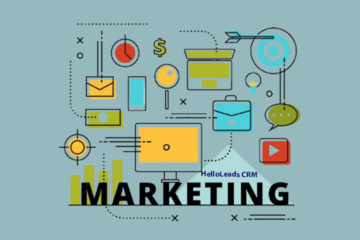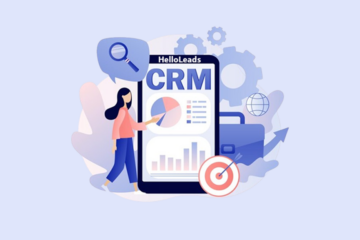
In today’s fiercely competitive business landscape, lead generation stands as a pivotal pillar of success. Yet, not all leads are equal; some possess a higher likelihood of converting into paying customers. This is where the art of lead scoring comes into play. Through a systematic ranking approach that assesses leads based on their potential value, you can unlock the benefits of efficiency, resource optimization, and effort savings.
In this blog, we will walk you through the concept of lead scoring, explore why it’s an essential tool for your business, and provide step-by-step guidance on creating an effective lead scoring model. Whether you’re a seasoned sales professional or new to the world of lead generation, this guide equips you with the insights to elevate your strategy. So, let’s embark on this journey and learn how to score your way to success!
What is lead scoring?
Lead scoring is a method of ranking leads based on their potential value to a business, based on information such as their behaviors, interests, and demographics. Lead scoring helps businesses prioritize their sales and marketing efforts, focusing on leads who are more likely to become customers. Lead scores are usually determined by assigning points to specific lead characteristics, such as the lead’s level of engagement with the brand, the pages they’ve visited on the website, and the information they’ve provided, like their job title or company size. This process helps identify which leads are most likely to become paying customers, so the sales team can focus on nurturing and closing those leads first.
Why does your business need lead scoring?
Lead scoring is a key component of any successful lead generation strategy because it helps you prioritize your leads based on your potential for conversion into customers. By assigning a score to each lead, you can focus your attention on the leads who are most likely to convert, rather than wasting time and resources pursuing leads who are unlikely to be successful. This helps sales teams to be more efficient and effective in their outreach, increasing the chances of converting leads into customers, and ultimately contributes to the growth and success of the business. Additionally, lead scoring can also provide valuable insights into the behavior and preferences of potential customers, which can inform future marketing and sales efforts.
Lead scoring model

A lead scoring model is a method used to evaluate and rank leads based on their likelihood to become customers. The lead scoring model typically consists of a set of criteria and a scoring system that assigns a score to each lead based on their data and behavior. The score helps to prioritize the leads and determine which leads are the most promising for follow-up by the sales team.
The criteria used in a lead scoring model can include demographic information, such as job title, company size, and industry, as well as behavioral data, such as website visits, email opens, and form submissions. The weights assigned to each criteria determine the relative importance of each factor in determining the overall score.
Lead scoring models can be implemented using manual methods, such as spreadsheets or customer relationship management (CRM) software, or using machine learning algorithms that can automatically score leads based on their data and behavior.
The goal of a lead scoring model is to increase the efficiency of the sales and marketing processes by identifying the most promising leads, and to improve the overall conversion rate by focusing efforts on the leads that are most likely to become customers.
How to create a lead scoring model:

A lead scoring model involves the following steps:
Define your target audience: Start by identifying the ideal customer profile for your product or service. This will help you to determine the criteria for lead qualification and determine which leads are the most likely to become customers.
Determine lead scoring criteria: Decide which factors will be used to evaluate and score leads. This can include demographic information, such as job title, company size, and industry, as well as behavioural data, such as website visits, email opens, and form submissions.
Assign weights to each criteria: Determine the relative importance of each lead scoring criteria. For example, a lead’s job title may be more important than their location, or a high number of website visits may be more significant than email opens.
Establish a scoring range: Determine the range of scores that leads can receive, such as 0-100, and assign a score to each lead based on their data.
Evaluate and adjust: Regularly evaluate the performance of your lead scoring system and make adjustments as needed. This may involve changing the weighting of certain criteria, updating the scoring range, or adding new criteria based on changes in your target audience or market.
Integrate with sales and marketing processes: Integrate your lead scoring system with your sales and marketing processes, so that the right leads are being passed to the right salesperson at the right time.
Continuously monitor and refine: Continuously monitor the performance of your lead scoring system and make adjustments as needed to ensure that it continues to accurately reflect the needs and behaviors of your target audience.
By creating and using a lead scoring model, you can prioritize your outreach efforts, allocate resources effectively, and increase the likelihood of closing deals with the most promising leads.
In conclusion, lead scoring emerges as a formidable ally in optimizing your sales and marketing endeavours. It empowers you to pinpoint and prioritize the most promising leads, ensuring your resources are channelled where they matter most. Crafting a lead scoring model that accounts for demographics and behavior holds the potential to enhance your efficiency, zero in on high-conversion prospects, and elevate your overall conversion rate.
With the right lead scoring system in place, you not only save valuable time and resources but also maximize your return on investment. So, if you aspire to elevate your lead generation strategy to new heights, consider embracing a lead scoring model today. Through diligent planning, consistent monitoring, and ongoing refinement, you’re poised to reach your business objectives and secure more deals than ever before.
Related articles that you might be interested:
- Top 6 Lead Generation Ideas That Prioritize Quality Over Quantity
- Top 7 Compelling Reasons on Why Small Business needs a CRM
- Top 7 Effective Lead Nurturing Strategies in 2023











